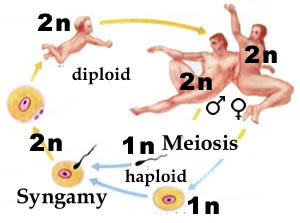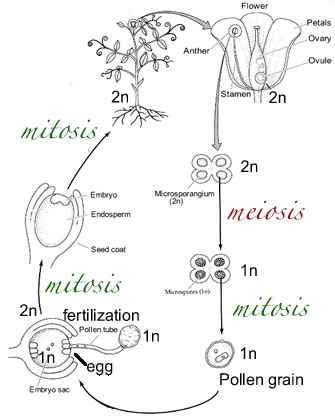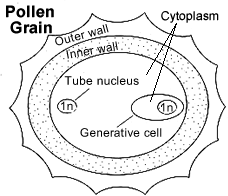

The formation of sperm (spermatogenesis) and the formation of pollen are both version of the same process, meiosis.
Most animals and higher plants are diploid; they have two sets of chromosomes, one from their female parent, the other from their male parent – such cells are referred to as 2N (2 x one complete chromosome set).
During the course of somatic (body) cell reproduction, each of these chromosomes is duplicated and one copy of each is segregated to each of the daughter cells through a process known as mitosis.
If a 2N cell enters mitosis, the daughter cells that result will also be 2N.
The process of sexual reproduction involves the production of gametes. Gametes are produced by meiosis.
During meiosis, one 2N cell enters, and four 1N cells are produced.
These 1N cells are known gametes. Males produce sperm (which are smaller and generally motile) while females produce eggs (which are larger and immotile).
In most animals, the 1N gametes never divide
again, and will die after a short time unless an egg and a sperm fuse
together in a process known as fertilization or syngamy to
form a new 2N cell.

